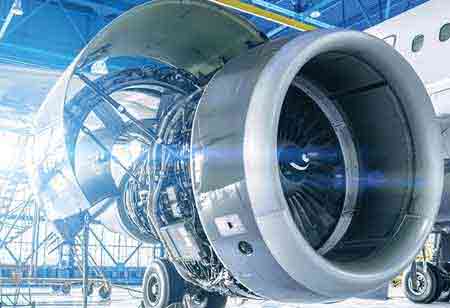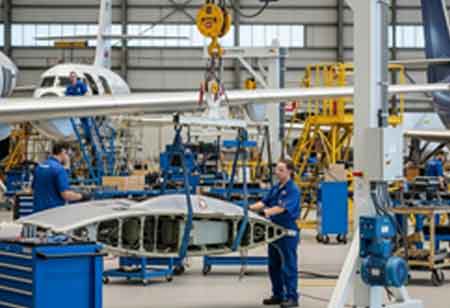The advanced fuel tanks automatically seal punctures caused by ballistic impacts or mechanical failures, significantly reducing the likelihood of fuel leaks and subsequent fires. The technology has evolved over decades, finding applications in military aircraft, helicopters, and commercial aviation sectors. The increasing deployment of UAVs in military and commercial applications, such as surveillance and logistics, has created new opportunities for integrating self-sealing technology into lightweight fuel storage systems.
The future of self-sealing fuel containments is marked by continuous innovation and expanding applications. The sensors detect punctures, fuel leaks, and material fatigue in real time, providing immediate data to pilots and ground maintenance crews. By incorporating Internet of Things (IoT) connectivity, aircraft operators can remotely monitor fuel tank health and predict maintenance needs before failures occur.
Adoption of Self-Sealing Fuel Containments
The increasing emphasis on aircraft survivability, safety, and operational efficiency has driven the adoption of self-sealing fuel containment systems. Military and defense sectors have historically led the demand, recognizing the importance of safeguarding fuel tanks against hostile attacks. Enhancing aircraft resilience in combat scenarios has motivated developing and refining self-sealing fuel tank technology.
In commercial aviation, safety regulations continue to become stricter, leading manufacturers to explore self-sealing fuel tanks to minimize fire hazards in case of accidents. Additionally, advancements in lightweight materials have made it feasible to integrate these systems without significantly impacting aircraft performance. The growing focus on sustainability and reducing fuel wastage has also increased interest in these containment solutions.
Modern advancements have introduced multi-layered self-sealing fuel tanks composed of elastomeric materials, polymers, and advanced composites. The tanks contain layers that expand and congeal when punctured, instantly sealing leaks without external intervention. Cutting-edge research explores self-healing materials inspired by biological processes, such as synthetic polymers capable of autonomously repairing structural damage at the molecular level.
Expanding self-sealing fuel containment technology in commercial aviation and electric aircraft is also gaining momentum. As sustainable aviation fuel (SAF) and hydrogen-based propulsion systems become more prevalent, self-sealing tanks must adapt to accommodate these alternative fuels.
Technological Advancements and Trends
The global self-sealing fuel containment market has witnessed steady growth, primarily fueled by rising defense expenditures and technological advancements. Countries investing heavily in air forces continuously seek improved aircraft survivability, propelling demand for innovative fuel containment systems. Beyond the military sector, emerging applications in drones, unmanned aerial vehicles (UAVs), and electric vertical take-off and landing (eVTOL) aircraft are reshaping the market landscape. While effective, these early designs added substantial weight and required frequent maintenance.
Additive manufacturing enables precise design customization, reducing production costs while enhancing durability. Computational modeling and AI-driven simulations have refined self-sealing capabilities, ensuring the tanks meet rigorous performance standards before undergoing physical testing. Self-sealing fuel containments have revolutionized aerospace safety by providing an effective means to mitigate fuel-related hazards. Driven by increasing defense requirements, stringent safety regulations, and technological breakthroughs, these systems have evolved into sophisticated solutions that enhance aircraft survivability.
Market trends indicate sustained growth, with expanding applications in UAVs, commercial aviation, and emerging electric aircraft. Modern solutions utilize lightweight composites and nanomaterials that provide high durability without compromising structural integrity. Retrofitting older aircraft with self-sealing fuel tanks requires extensive modifications, making it an expensive and complex process. Manufacturers are developing modular designs that allow easier integration into various aircraft models. Ongoing research focuses on enhancing material longevity through innovative coatings and chemical-resistant compounds.
Environmental Impact and Sustainability Considerations
The environmental implications of self-sealing fuel containments extend beyond their safety benefits. By preventing fuel leaks, these systems help reduce hydrocarbon contamination in soil and water sources, minimizing ecological damage. In military operations, where fuel spillage poses a significant environmental risk, self-sealing tanks offer a proactive solution to mitigate these concerns. The development of eco-friendly materials is another area of focus. Traditional rubber and polymer-based self-sealing technologies rely on synthetic compounds that may have environmental drawbacks.
Researchers are now exploring biodegradable elastomers and bio-based polymers that maintain high-performance standards while reducing the ecological footprint of fuel containment solutions. Aerospace manufacturing sustainability initiatives encourage the adoption of energy-efficient production techniques. Using recycled materials in self-sealing fuel tank construction and advancements in non-toxic adhesives contribute to greener manufacturing practices. The aerospace industry's shift toward electrification and alternative fuels also complements the evolution of self-sealing technologies, ensuring their compatibility with emerging fuel sources.
The bioengineered polymers can autonomously repair themselves multiple times, significantly enhancing the longevity and reliability of self-sealing fuel tanks. Another exciting frontier involves the application of biomimicry in self-sealing materials. Inspired by natural wound-healing processes, researchers are developing synthetic materials that mimic biological responses to damage. Next-generation self-sealing fuel tanks must balance high-performance requirements with minimal weight impact, ensuring optimal maneuverability and endurance in combat scenarios.
Challenges such as weight optimization, material durability, and compatibility with alternative fuels continue to shape the industry's research and development efforts. However, ongoing innovations in nanotechnology, biomimicry, and innovative materials offer promising solutions to these challenges. The environmental benefits of self-sealing fuel tanks underscore their importance in promoting sustainable aviation practices.









